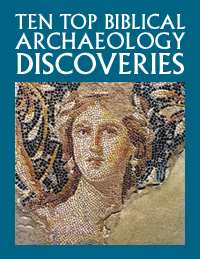
Hittite copy of the Epic of Gilgamesh. Courtesy Staatliche Museen zu Berlin, Vorderasiatisches Museum, Sandra Steiß, CC BY-SA 4.
Hittite, the language of the ancient Anatolian kingdom of Hatti, is the oldest recorded Indo-European language. Predominantly used in central and eastern Anatolia and northwestern Syria, the Hittite language is attested—mostly on clay tablets—from around the 18th century BCE until the fall of the Hittite empire during the Bronze Age Collapse in the 12th century BCE. Although the Hittite language had fallen out of use by the time Israel and Judah emerged in the southern Levant, the impact that the Hittite empire had on the biblical world can still be seen in the biblical narrative, and the period of the patriarchs largely coincided with the height of the Hittites.
The Language of Neshash
Referred to by its speakers as the “language of Neshash” (modern Kültepe in central Turkey), Hittite and other Anatolian languages—such as Luwian and Palaic—belong to a language branch thought to be one of the first to separate from the Indo-European language tree. Hittite was primarily an administrative and religious language, and most Hittite texts deal with cultic matters, such as festivals, rituals, and incantations. Many texts also come from political contexts and include treaties, official letters, and royal annals. As the Hittite empire was one of the major powers of the ancient Near East during the second millennium BCE, these records have provided a wealth of information on the culture, politics, and history of the period.
Hittite was heavily influenced by other Anatolian and northern Mesopotamian languages, both Indo-European and Semitic. While some of the language’s unique features are certainly the results of this influence, others are thought to be archaic features of Indo-European languages, which were lost in the main branch of the language family after the Anatolian languages split off.

Hittite core vocabulary was primarily in line with other Indo-European languages, and some of its vocabulary is even remarkably similar to modern languages, as is the case with the Hittite word for water, watar. Like other Indo-European languages, Hittite words consisted of roots with added suffixes which can express the gender, case, mood, tense, and number of the root. An example of this is tuzziš, which means “army,” in the nominative case (base form, used when the word is the subject of a sentence). The form tuzzin is its accusative case (used when the word is the direct object of a verb) and tuzziyaš is the genitive case (mostly used to show ownership: “of the army”), all in singular.

The Lion Gate of Hattusa, the capital of the Hittite Empire. Courtesy Photo Companion to the Bible.
Old Hittite included eight grammatical cases, whose functions largely coincide with other ancient Indo-European languages, although Hittite did have more cases than some of those languages (Greek only had five; Latin had six). However, Hittite had far fewer verbal tenses than Greek or Latin, with only two primary tenses—past and present/future.
As the Hittite language was predominantly a language of the elite, Hittite texts are typically found in important religious and political centers of the Hittite empire, and seldom deal with matters beyond the cult and crown. However, the development of Hittite during the period in which it was recorded shows that it was a spoken language, and the heavy influence of loanwords and non-Hittite names indicates that the Hittite culture was likely a poly-linguistic one. This view is supported by the extensive presence of religious texts from Hittite sites that are written in multiple languages.

General map of the origins of various Ancient Near Eastern and Mediterranean scripts. Biblical Archaeology Society.
While Hittite was the first recorded Indo-European language, it did not have its own script and instead borrowed a peripheral cuneiform script from Akkadian. Due to this direct borrowing, Hittite texts frequently utilize Sumerian logograms as well as Akkadian Akkadograms, which functioned as logograms but were written in syllabic Akkadian. Scholars had been able to read this Mesopotamian script since the mid-19th century, but the Hittite language remained a mystery until 1915, when it was decoded by Bedřich Hrozný (1879–1952). In addition to cuneiform, Hittite also occasionally utilized Luwian hieroglyphs, predominantly for names and titles on seals.
To learn more about Hittite, read The Elements of Hittite by Theo Van den Hout, or check out this online course.
Read more in the Bible History Daily:
All-Access members, read more in the BAS Library:
Hittites in the Bible: What Does Archaeology Say?
The Hittites: Between Tradition and History
Not a BAS Library or All-Access Member yet? Join today.The post What is Hittite? appeared first on Biblical Archaeology Society.


0 Commentaires